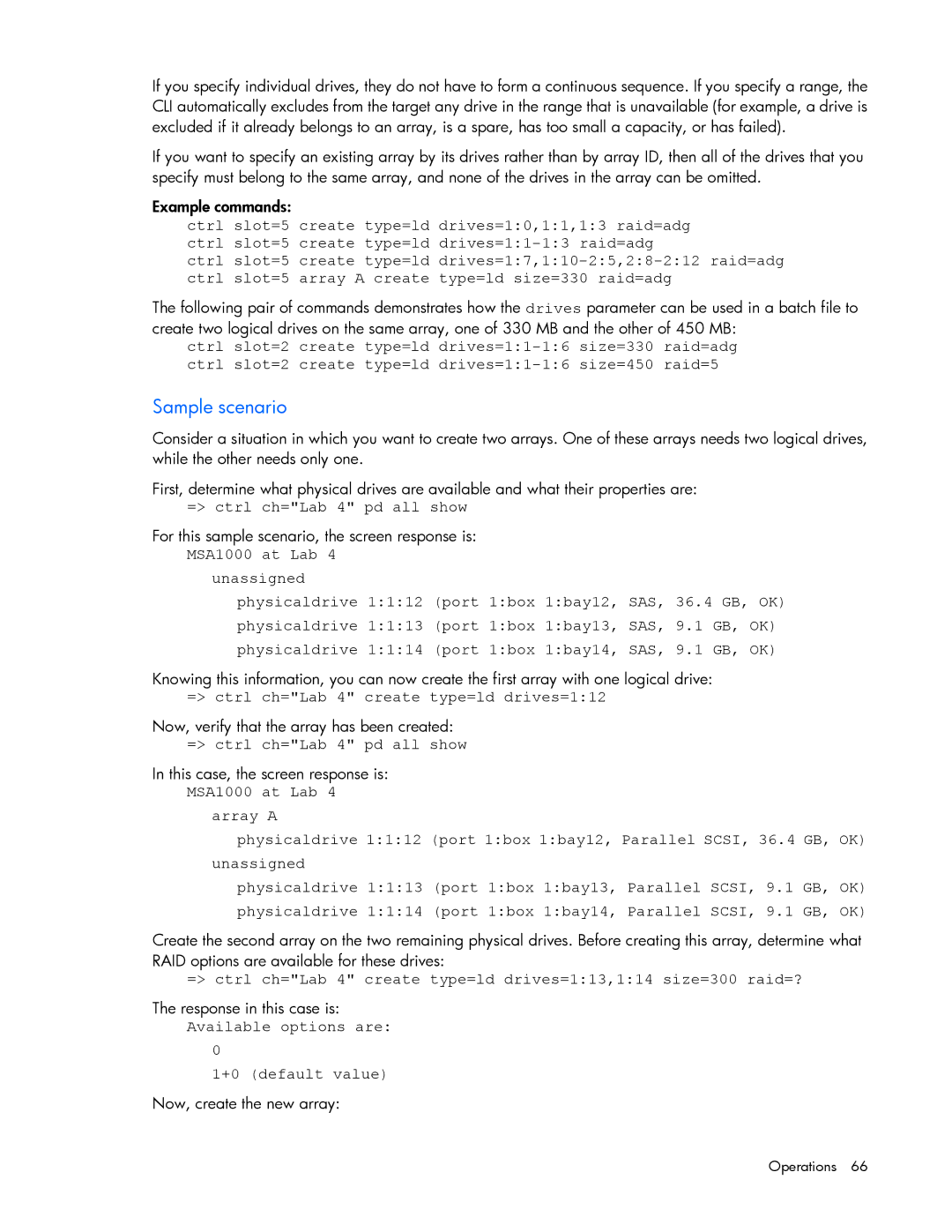If you specify individual drives, they do not have to form a continuous sequence. If you specify a range, the CLI automatically excludes from the target any drive in the range that is unavailable (for example, a drive is excluded if it already belongs to an array, is a spare, has too small a capacity, or has failed).
If you want to specify an existing array by its drives rather than by array ID, then all of the drives that you specify must belong to the same array, and none of the drives in the array can be omitted.
Example commands:
ctrl slot=5 create type=ld drives=1:0,1:1,1:3 raid=adg ctrl slot=5 create type=ld
ctrl slot=5 create type=ld
The following pair of commands demonstrates how the drives parameter can be used in a batch file to create two logical drives on the same array, one of 330 MB and the other of 450 MB:
ctrl slot=2 create type=ld
Sample scenario
Consider a situation in which you want to create two arrays. One of these arrays needs two logical drives, while the other needs only one.
First, determine what physical drives are available and what their properties are: => ctrl ch="Lab 4" pd all show
For this sample scenario, the screen response is: MSA1000 at Lab 4
unassigned
physicaldrive 1:1:12 (port 1:box 1:bay12, SAS, 36.4 GB, OK) physicaldrive 1:1:13 (port 1:box 1:bay13, SAS, 9.1 GB, OK) physicaldrive 1:1:14 (port 1:box 1:bay14, SAS, 9.1 GB, OK)
Knowing this information, you can now create the first array with one logical drive: => ctrl ch="Lab 4" create type=ld drives=1:12
Now, verify that the array has been created: => ctrl ch="Lab 4" pd all show
In this case, the screen response is: MSA1000 at Lab 4
array A
physicaldrive 1:1:12 (port 1:box 1:bay12, Parallel SCSI, 36.4 GB, OK) unassigned
physicaldrive 1:1:13 (port 1:box 1:bay13, Parallel SCSI, 9.1 GB, OK) physicaldrive 1:1:14 (port 1:box 1:bay14, Parallel SCSI, 9.1 GB, OK)
Create the second array on the two remaining physical drives. Before creating this array, determine what RAID options are available for these drives:
=> ctrl ch="Lab 4" create type=ld drives=1:13,1:14 size=300 raid=?
The response in this case is:
Available options are:
0
1+0 (default value)
Now, create the new array:
